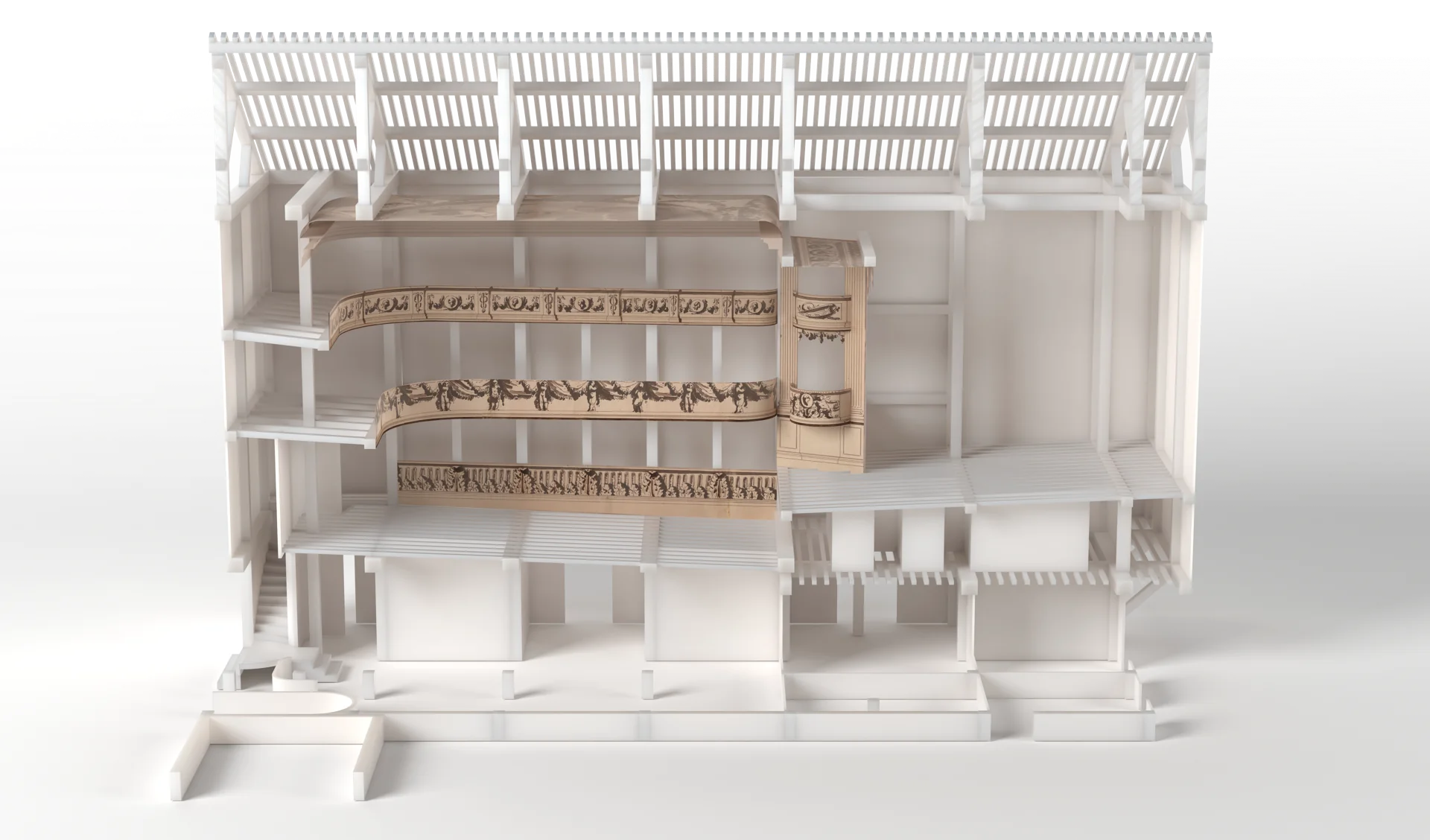VESPACE
Reverse-architecture
How can we model a period theatre space today?
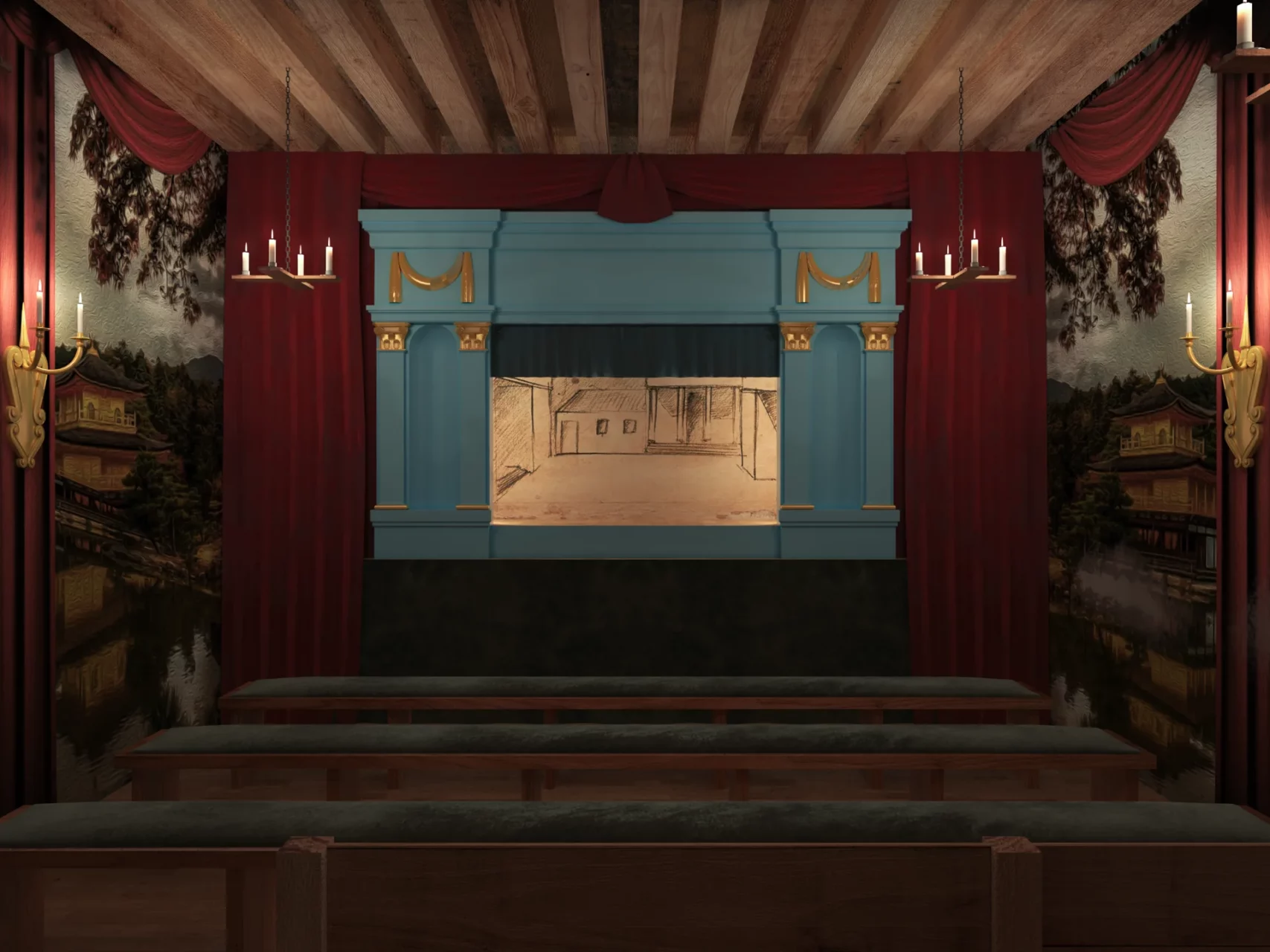
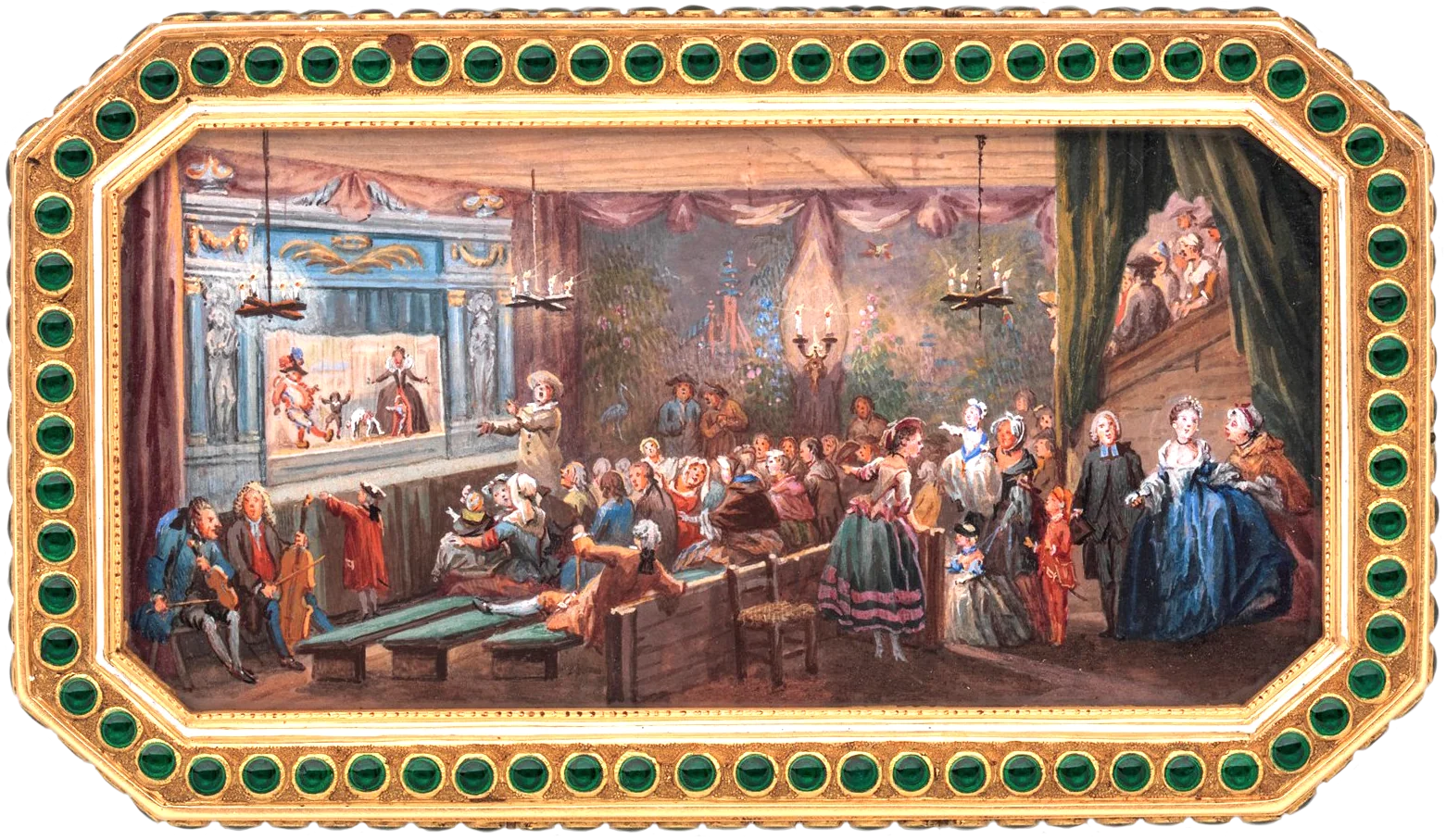
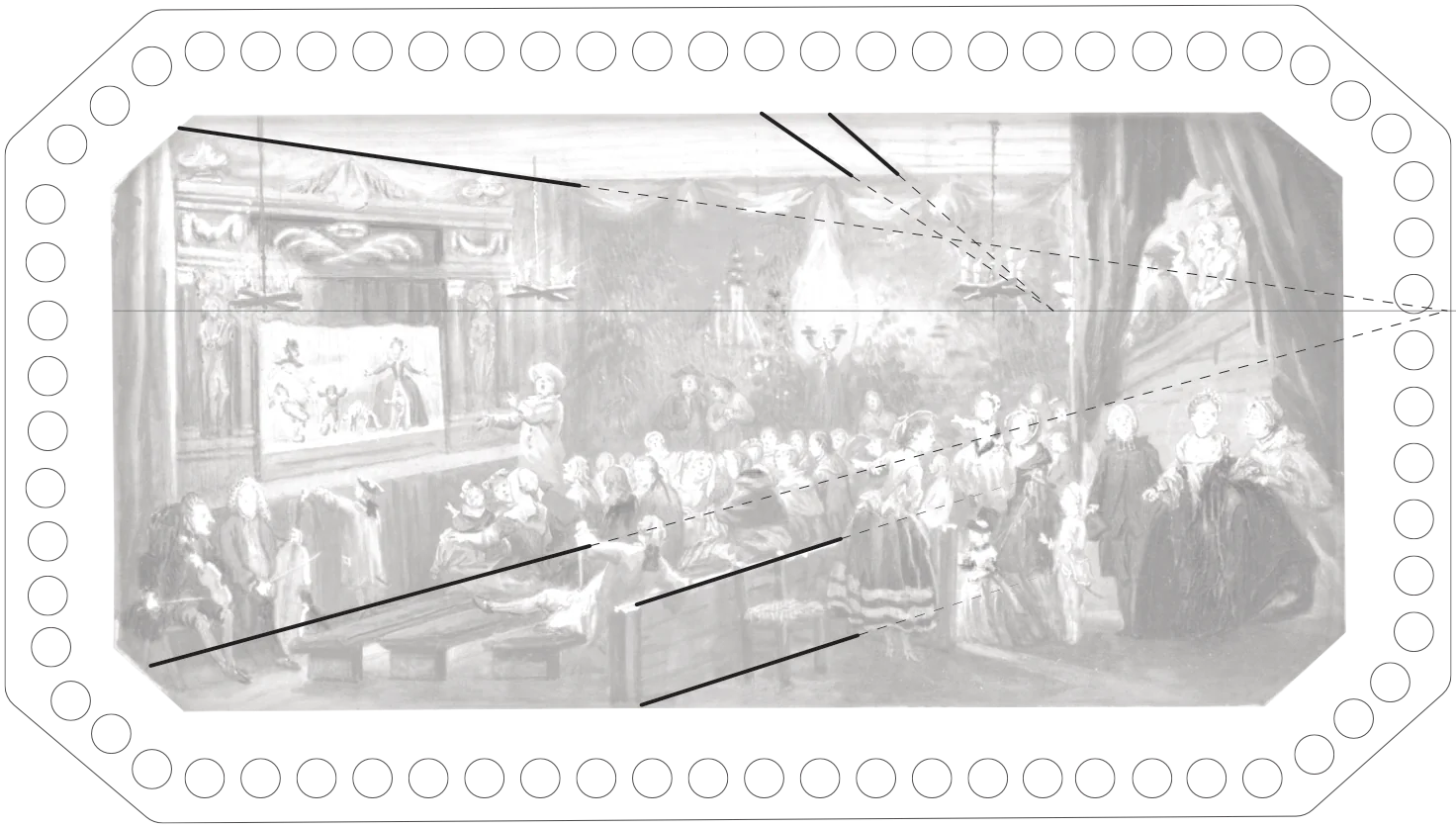
A question of choice
In order to create a three-dimensional model of a theatre corresponding to the miniature on this snuff box, everything comes down to interpretation. What were the real dimensions of this tiny theatre? Where was the entrance situated? How did spectators access the amphitheater? These features are indicated in a cursory manner by the artist, and must be fleshed out by experts who can help design solutions that are plausible both architecturally and historically.
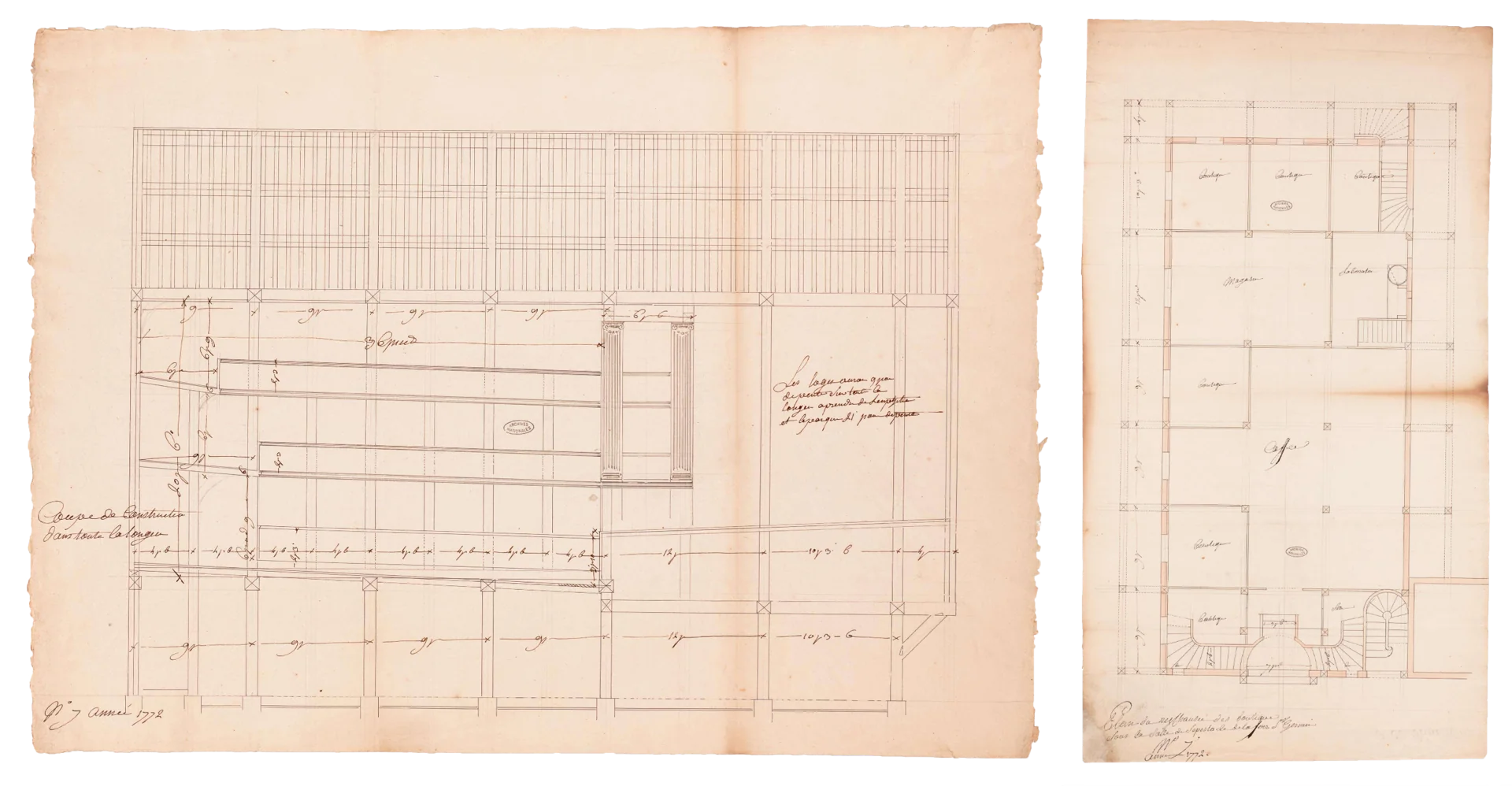
No such thing as an innocent image
When the artist created this painting, he wanted to give form to his own vision of this marionette theatre. A perspectival analysis of the painting illustrates the degree to which he “cheated” by multiplying the number of vanishing points, resulting in an architecturally impossible space. In classical perspective, all parallel straight lines meet at a single vanishing point. In this miniature, some straight lines remain parallel, whereas others meet up at differing points.
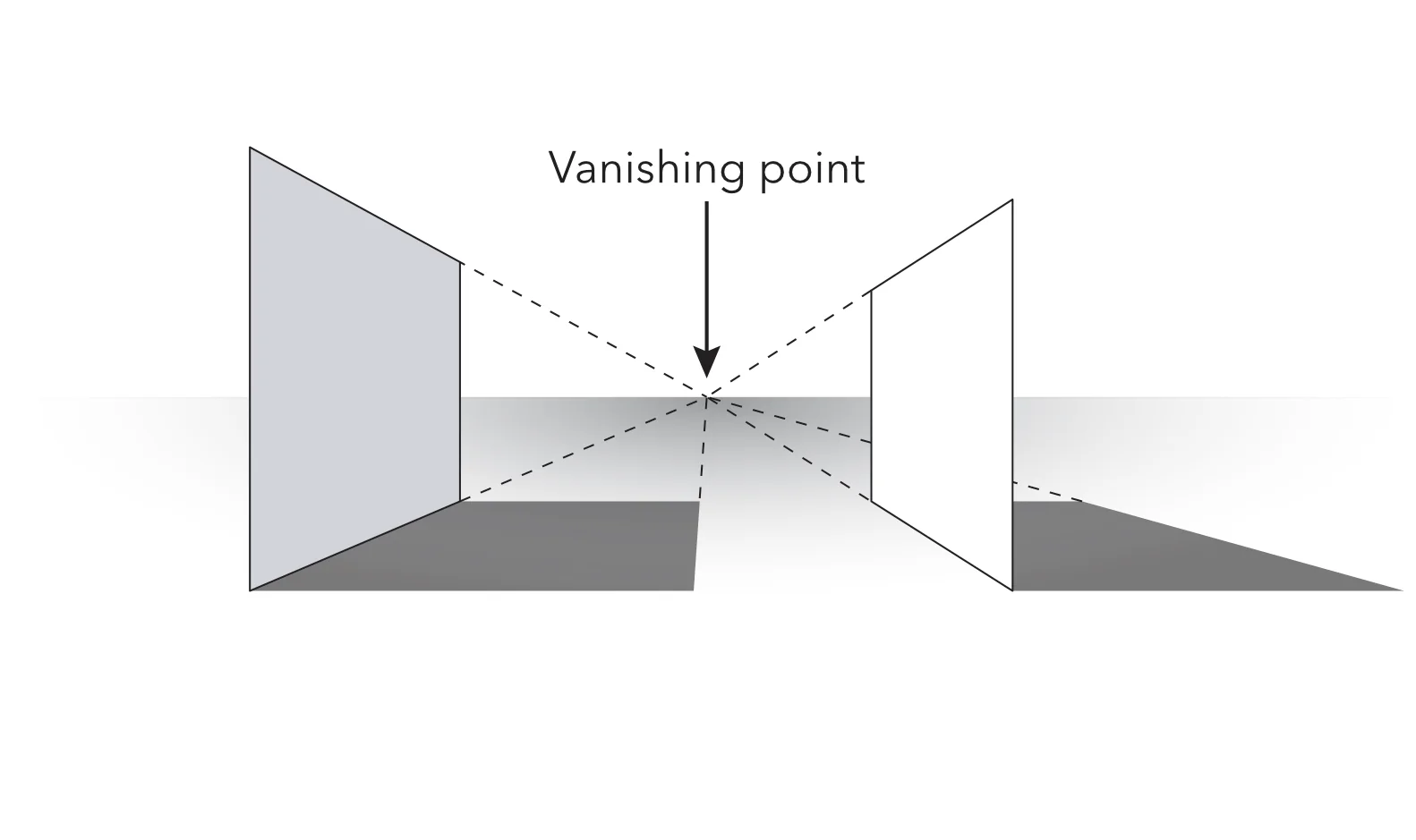
Architecture and audiences
This cross-section of a virtual model of a theatre for the Saint-Germain Fair from 1772 shows different spaces that would have been accessible to the public.The organization of the boxes (loges) overlooking the parterre – two spaces occupied by members of different social groups – gives rise to a large variety of interactions: glances, solicitations, seductions… as well as hurled objects and shouting!
